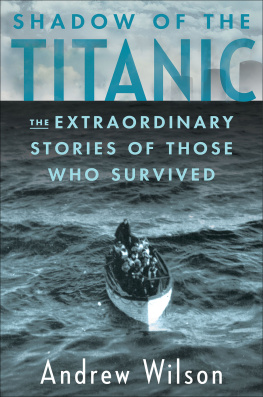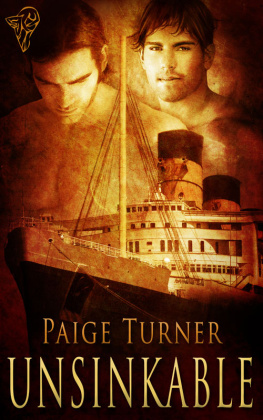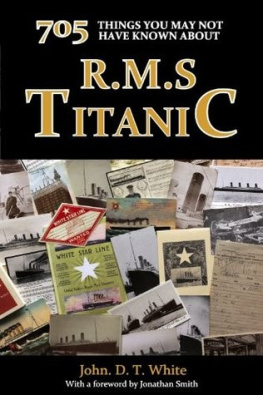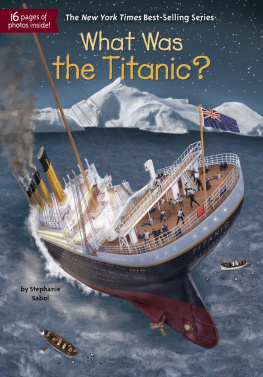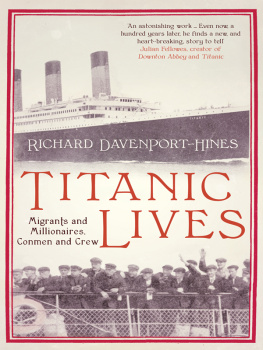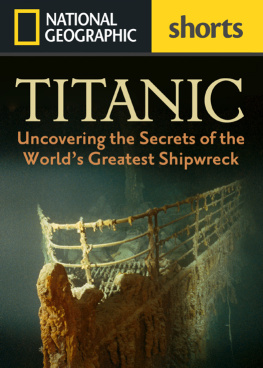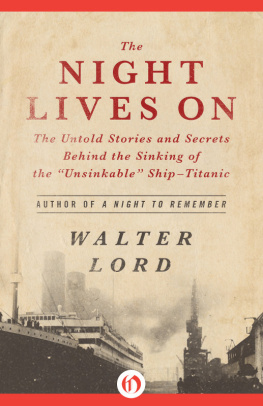ICEBERG RIGHT AHEAD!
The Titanic was the largest ocean liner ever built. Shipbuilders hailed its state-of-the-art design. First-class passengers enjoyed extravagant luxuries onboard. But on April 15, 1912, five days after departing on its maiden voyage, disaster struck. Lookout Frederick Fleet spotted an iceberg in the darkness ahead. The crew tried desperately to turn the monstrous ship, but the iceberg tore through its side, sealing the Titanics fate. Two hours later, the unsinkable ship disappeared into the Atlantic Ocean, taking fifteen hundred passengers with it. Author Michael D. Cole examines the harrowing journey of this historic shipwreck.
About the Author
MICHAEL D. COLE is a graduate of Ohio State University and has written several titles for Enslow Publishers, Inc., including Eye on the Universe: The Incredible Hubble Space Telescope.

Image Credit: The Granger Collection, NYC
Shortly after midnight on April 15, 1912, Harold Cottam, the wireless communication operator on the Carpathia, received a distress call from the RMS Titanic. The great ship had struck an iceberg and was sinking fast.
IT WAS 12:15 A.M. ON APRIL 15, 1912. Harold Cottam was operating the wireless communication system aboard the steamer ship Carpathia. Cottam was almost done with his shift when a series of Morse code messages started to come through. He quickly sat down to decode them.
Require immediate assistance. Come at once. We have struck an iceberg sinking. The message was followed by the location of the ship and the letters CQD, which meant Come, Quick, Danger. The message also included the letters MGY.
Cottam was shocked. The letters MGY were the code symbols for the RMS Titanic.
Newspapers around the world had been filled with stories about the Titanic as it prepared for its maiden voyage across the Atlantic Ocean, from England to New York. The Titanic was the largest ocean liner ever built. Its engineering and design were state-of-the-art. Builders believed the mighty ship was virtually unsinkable.

Image Credit: Public Domain Image
Before the ships maiden voyage and tragic disaster, the White Star Line advertised the Titanics one-of-a-kind qualities, including luxuries never seen before on a ship.
The Titanic had departed from Southampton, England, five days earlier on April 10, 1912. After brief stops in France and Ireland to pick up more passengers, the Titanic steamed out to sea. More than two thousand passengers and crew were aboard.
Cottam quickly informed his captain of the message he had just heard. Fifty-eight miles away, the Titanic was sinking.
Aboard the doomed ship, little more than half an hour had passed since lookout Frederick Fleet had spotted a dark mass in the distance.
Iceberg right ahead, Fleet had quickly warned the officers on the bridge. However, the giant ship had not turned in time and scraped the side of the iceberg. In a matter of seconds, the ships fate had been sealed. The iceberg had opened the Titanics hull. Water flooded into the forward compartments.

Image Credit: AP Images
In the crows nest, lookout Frederick Fleet spotted an iceberg in the distance, warning the ships officers on the bridge. But the warning did not give the ship enough time to turn and avoid it. This is a photo of the Titanic taken in 1912 as it steamed out to sea.

Image Credit: ullstein bild / The Granger Collection
This painting by Willy Stwer shows passengers and crew members rowing lifeboats away from the Titanic as it sinks into the ocean.
The terrible news then spread to the crew and passengers. The Titanic had struck an iceberg and was going down. Stewards moved quickly across the ships many decks. Passengers were told to get to the lifeboat deck and put on their lifejackets. For the next two hours, a tragic drama would unfold upon the decks of the Titanic. The ill-fated ship and its passengers were about to slip into history.
Even before its maiden voyage, the Titanic had become a kind of symbol. Its great size and luxury represented the best that could be produced with that eras wealth and know-how. People of all classes, from the very rich to the very poor, were aboard the ship that night. The loss of so many lives aboard the Titanic made the ships sinking a great tragedy.
The Titanic began as a triumph of the human spirit. It represented the human desire to build things bigger and better. Its end would be a reminder that nothing on the sea is unsinkable and that nothing in the world is certain.
IN THE EARLY TWENTIETH CENTURY, traveling was much different than it is today. There was no air travel for regular passengers. Airplanes had just been invented. Travel by ship was rough. Crossing the Atlantic sometimes meant week-long voyages aboard ships. Conditions were usually not comfortable or relaxing.
The British owners and builders of the White Star Line of ships had been trying to change the style of sea travel since 1870. In that year, the White Star Line launched its first ship, the Oceanic. It had many features that made travel more comfortable for passengers. The company built five other ocean liners between 1899 and 1907. Each one set a new record for size.
By 1909, the technology existed not only to build the ships larger, but also to fit them with engines that were faster and more reliable. The White Star Line set out to build a new fleet of liners of extreme luxury to appeal to the worlds wealthiest travelers. J. Bruce Ismay, manager of the White Star Line, wanted to build three shipsthe Olympic, the Titanic, and the Gigantic. The Olympic was built first and successfully launched in October 1910. But the Titanic was to be even bigger and more luxurious.

Image Credit: Library of Congress Prints and Photographs
Owners of the White Star Line wanted to change the style of sea travel by creating larger and faster ships while also providing comfort and luxury for its passengers. In 1909, they began to build three ships for the wealthiest travelers. This photo shows the bows of the Olympic (right) and the Titanic (left) during construction between 1909 and 1911 in Belfast, Ireland.
Construction on the hull of the Titanic began in March 1909 at the shipyard of the Harland and Wolff shipbuilding firm in Belfast, Ireland. The Titanics hull was 882 feet long, nearly the length of three football fields. The design included nine decks, making the ship as tall as an eleven-story building. It was driven by three giant steam engines, which were powered by twenty-nine boilers. Each boiler was fifteen feet high and weighed more than one hundred tons. When completed, the ship contained twenty-five thousand tons of steel, held together by more than 3 million rivets.



